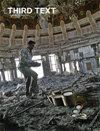出汗的照片
IF 0.3
3区 艺术学
0 ART
引用次数: 0
摘要
摘要本文回顾了已故菲律宾电影制作人利诺·布罗克的电影,以削弱现实主义和奇观之间的区别,直到今天,在许多关于运动图像政治能力的讨论中。布罗卡的作品在这里被理解为现实主义和逃避现实主义,这与其他主要的非西方电影制作人的作品一致,他们的作品涉及反殖民和好莱坞的代码。作者重点分析了布罗卡在《马乔舞者》(1988)中所采用的表达融合,并认为这部电影发展了一种汗水和流动性的诗学,将观众体验打开到意想不到的强度;强度,邀请我们思考和感受更多,思考和感受不同。本文章由计算机程序翻译,如有差异,请以英文原文为准。
Images That Sweat
Abstract This article revisits the cinema of the late Filipino filmmaker Lino Brocka in order to erode the distinction between realism and spectacle at play, still today, in many discussions about the political capacities of the moving image. The work of Brocka is understood here as both realist and escapist, in agreement with the work of other key non-Western filmmakers that work with anti-colonial and Hollywoodian codes. The author focuses the analysis on the expressive amalgamation employed by Brocka in Macho Dancer (1988) and argues that this film develops a poetics of sweat and liquidity opening up the spectatorial experience to unexpected intensities; intensities that invite us to think and feel more and to think and feel differently.
求助全文
通过发布文献求助,成功后即可免费获取论文全文。
去求助
来源期刊

Third Text
ART-
CiteScore
0.40
自引率
0.00%
发文量
39
期刊介绍:
Third Text is an international scholarly journal dedicated to providing critical perspectives on art and visual culture. The journal examines the theoretical and historical ground by which the West legitimises its position as the ultimate arbiter of what is significant within this field. Established in 1987, the journal provides a forum for the discussion and (re)appraisal of theory and practice of art, art history and criticism, and the work of artists hitherto marginalised through racial, gender, religious and cultural differences. Dealing with diversity of art practices - visual arts, sculpture, installation, performance, photography, video and film.
 求助内容:
求助内容: 应助结果提醒方式:
应助结果提醒方式:


